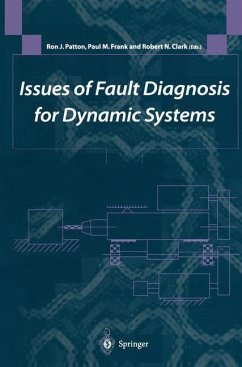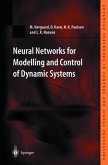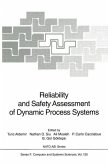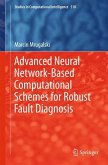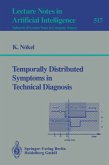There is an increasing demand for dynamic systems to become safer, more reliable and more economical in operation. This requirement extends beyond the normally accepted safety-critical systems e.g., nuclear reactors, aircraft and many chemical processes, to systems such as autonomous vehicles and some process control systems where the system availability is vital. The field of fault diagnosis for dynamic systems (including fault detection and isolation) has become an important topic of research. Many applications of qualitative and quantitative modelling, statistical processing and neural networks are now being planned and developed in complex engineering systems. Issues of Fault Diagnosis for Dynamic Systems has been prepared by experts in fault detection and isolation (FDI) and fault diagnosis with wide ranging experience.
Subjects featured include: - Real plant application studies; - Non-linear observer methods; - Robust approaches to FDI; - The use of parity equations; - Statistical process monitoring; - Qualitative modelling for diagnosis; - Parameter estimation approaches to FDI; - Fault diagnosis for descriptor systems; - FDI in inertial navigation; - Stuctured approaches to FDI; - Change detection methods; - Bio-medical studies. Researchers and industrial experts will appreciate the combination of practical issues and mathematical theory with many examples. Control engineers will profit from the application studies.
Since the time our first book Fault Diagnosis in Dynamic Systems: The ory and Applications was published in 1989 by Prentice Hall, there has been a surge in interest in research and applications into reliable methods for diag nosing faults in complex systems. The first book sold more than 1,200 copies and has become the main text in fault diagnosis for dynamic systems. This book will follow on this excellent record by focusing on some of the advances in this subject, by introducing new concepts in research and new application topics. The work cannot provide an exhaustive discussion of all the recent research in fault diagnosis for dynamic systems, but nevertheless serves to sample some of the major issues. It has been valuable once again to have the co-operation of experts throughout the world working in industry, gov emment establishments and academic institutions in writing the individual chapters. Sometimes dynamical systems have associated numerical models available in state space or in frequency domain format. When model infor mation is available, the quantitative model-based approach to fault diagnosis can be taken, using the mathematical model to generate analytically redun dant alternatives to the measured signals. When this approach is used, it becomes important to try to understand the limitations of the mathematical models i. e. , the extent to which model parameter variations occur and the effect of changing the systems point of operation.
Subjects featured include: - Real plant application studies; - Non-linear observer methods; - Robust approaches to FDI; - The use of parity equations; - Statistical process monitoring; - Qualitative modelling for diagnosis; - Parameter estimation approaches to FDI; - Fault diagnosis for descriptor systems; - FDI in inertial navigation; - Stuctured approaches to FDI; - Change detection methods; - Bio-medical studies. Researchers and industrial experts will appreciate the combination of practical issues and mathematical theory with many examples. Control engineers will profit from the application studies.
Since the time our first book Fault Diagnosis in Dynamic Systems: The ory and Applications was published in 1989 by Prentice Hall, there has been a surge in interest in research and applications into reliable methods for diag nosing faults in complex systems. The first book sold more than 1,200 copies and has become the main text in fault diagnosis for dynamic systems. This book will follow on this excellent record by focusing on some of the advances in this subject, by introducing new concepts in research and new application topics. The work cannot provide an exhaustive discussion of all the recent research in fault diagnosis for dynamic systems, but nevertheless serves to sample some of the major issues. It has been valuable once again to have the co-operation of experts throughout the world working in industry, gov emment establishments and academic institutions in writing the individual chapters. Sometimes dynamical systems have associated numerical models available in state space or in frequency domain format. When model infor mation is available, the quantitative model-based approach to fault diagnosis can be taken, using the mathematical model to generate analytically redun dant alternatives to the measured signals. When this approach is used, it becomes important to try to understand the limitations of the mathematical models i. e. , the extent to which model parameter variations occur and the effect of changing the systems point of operation.

